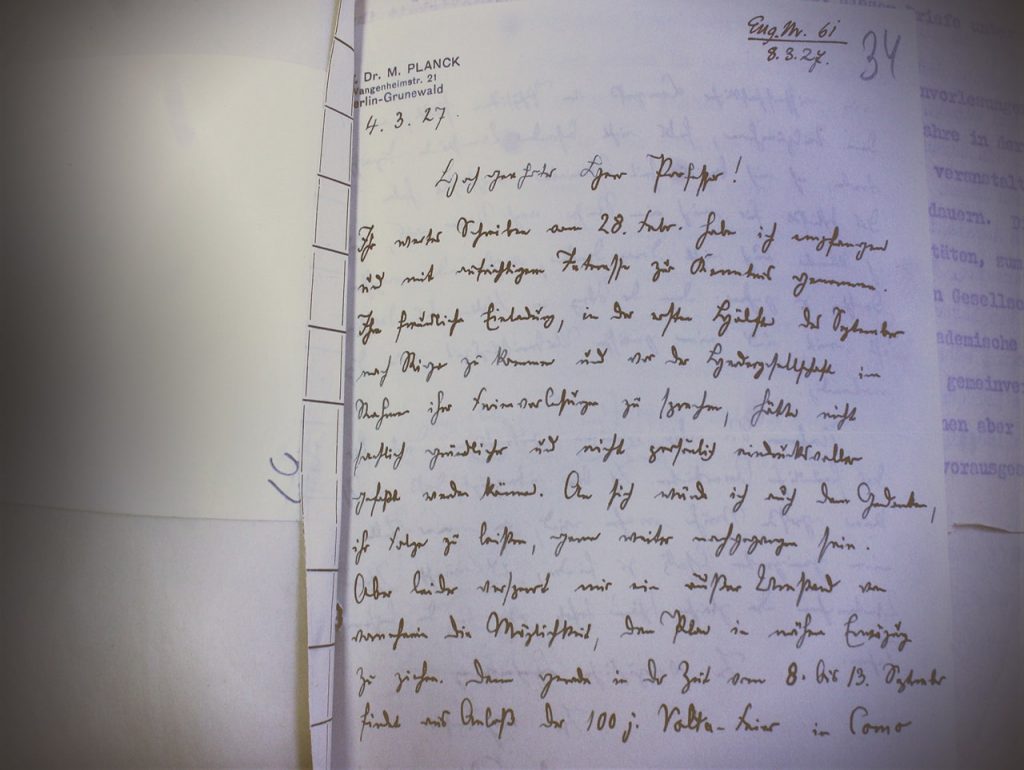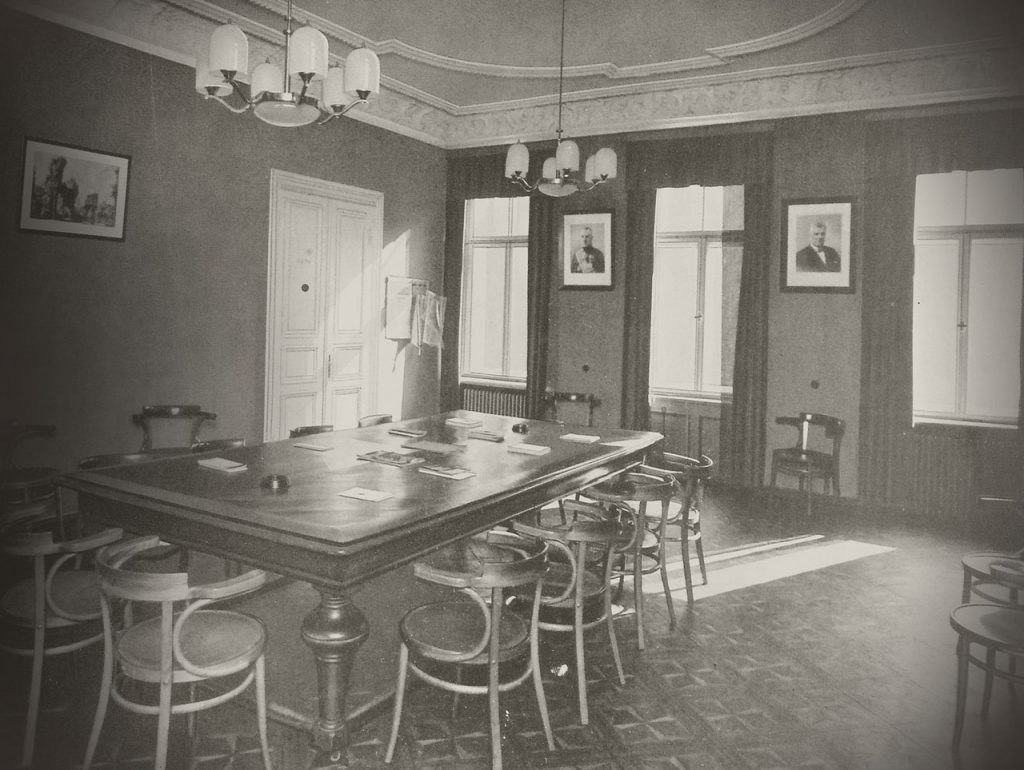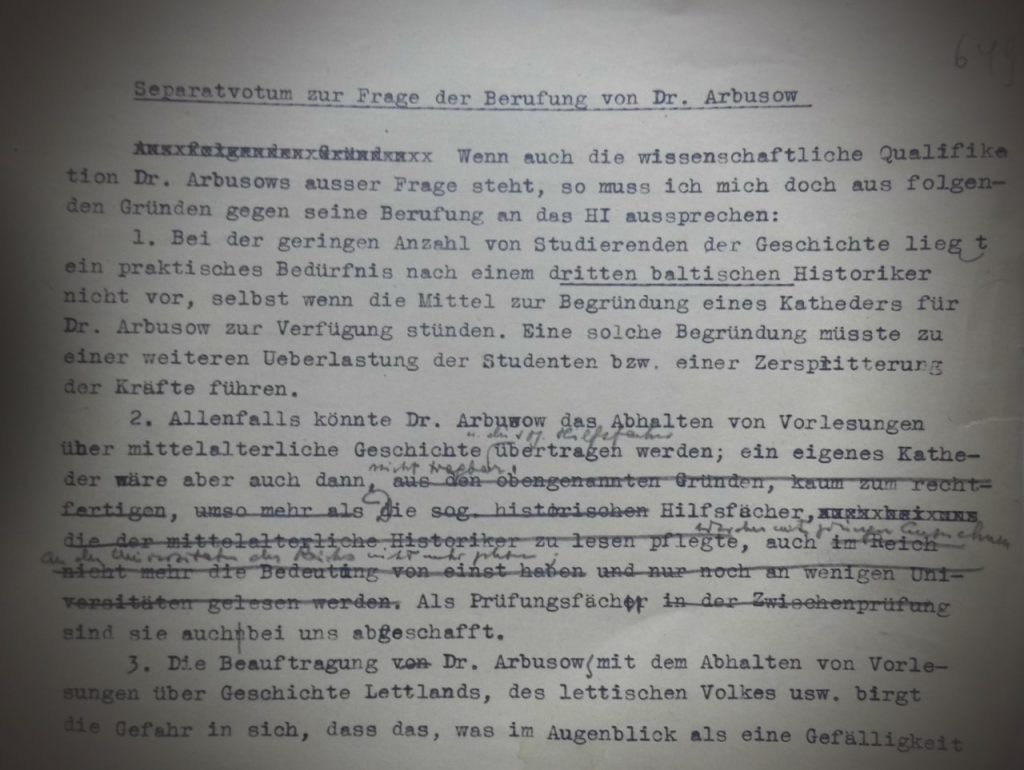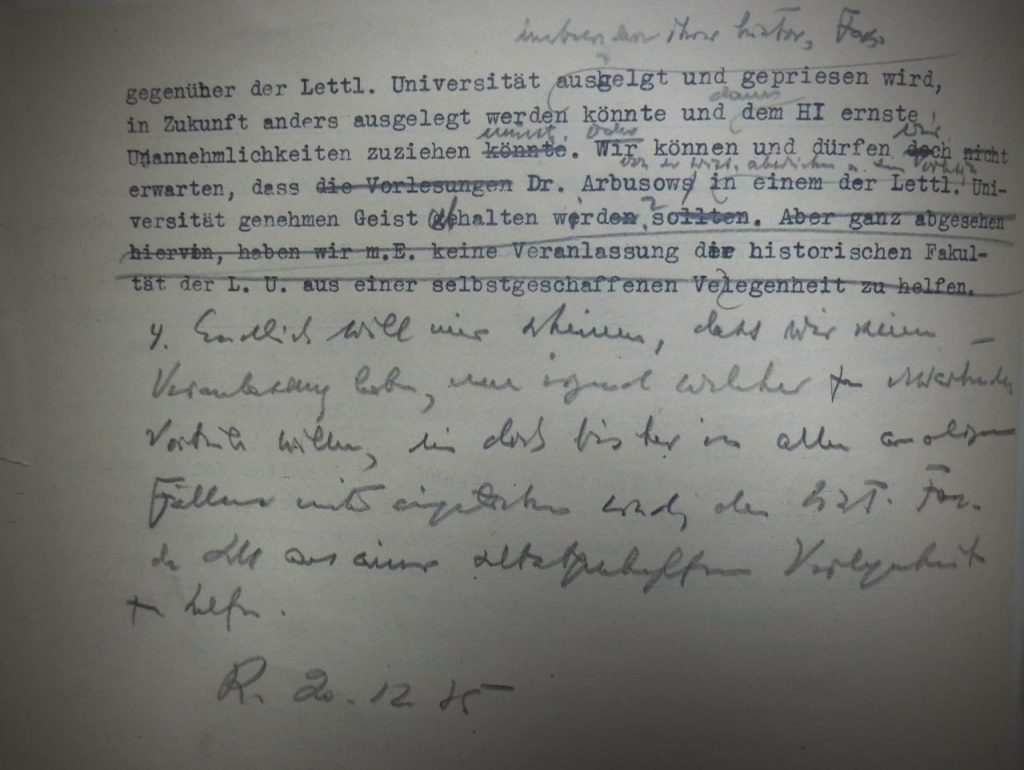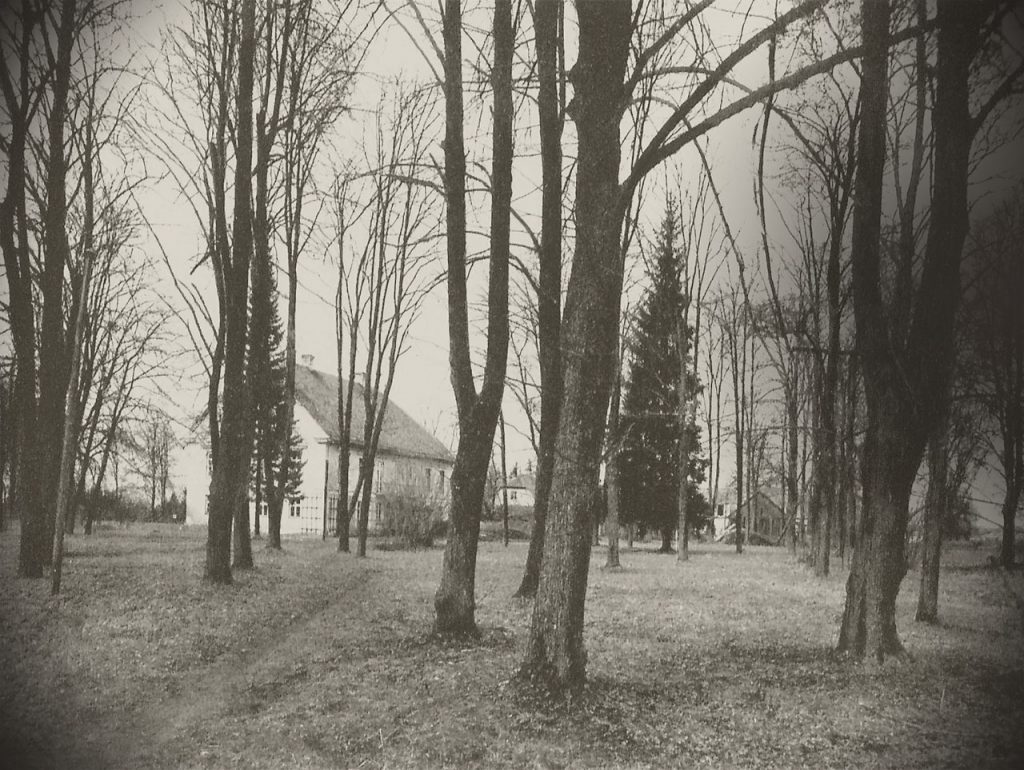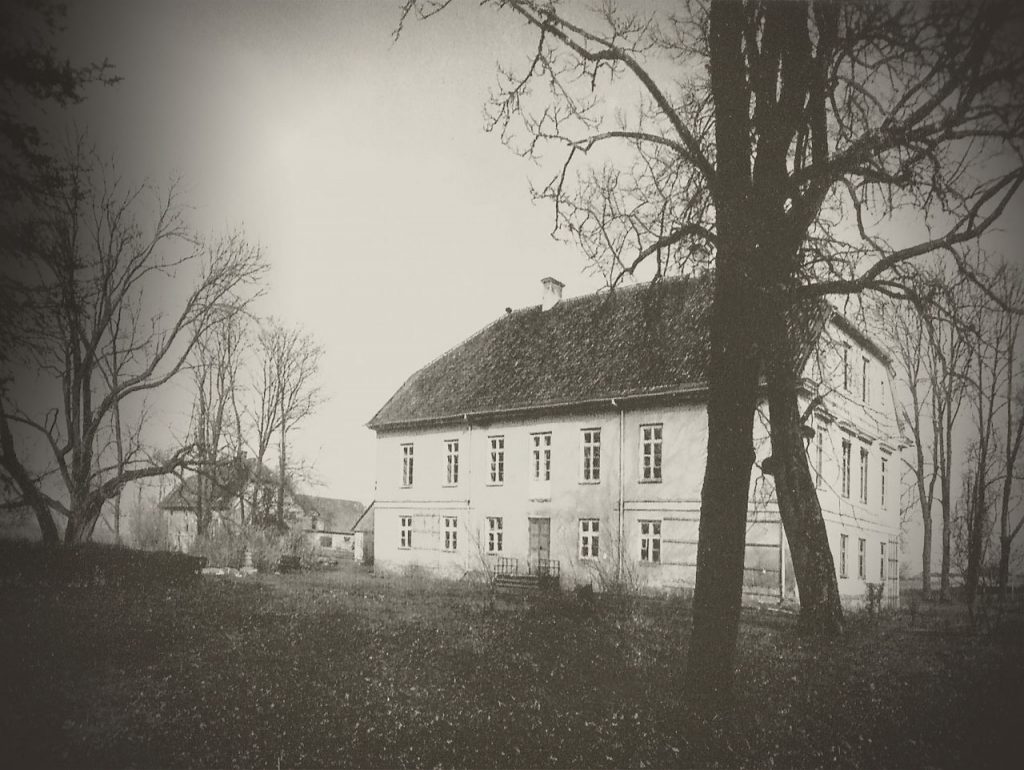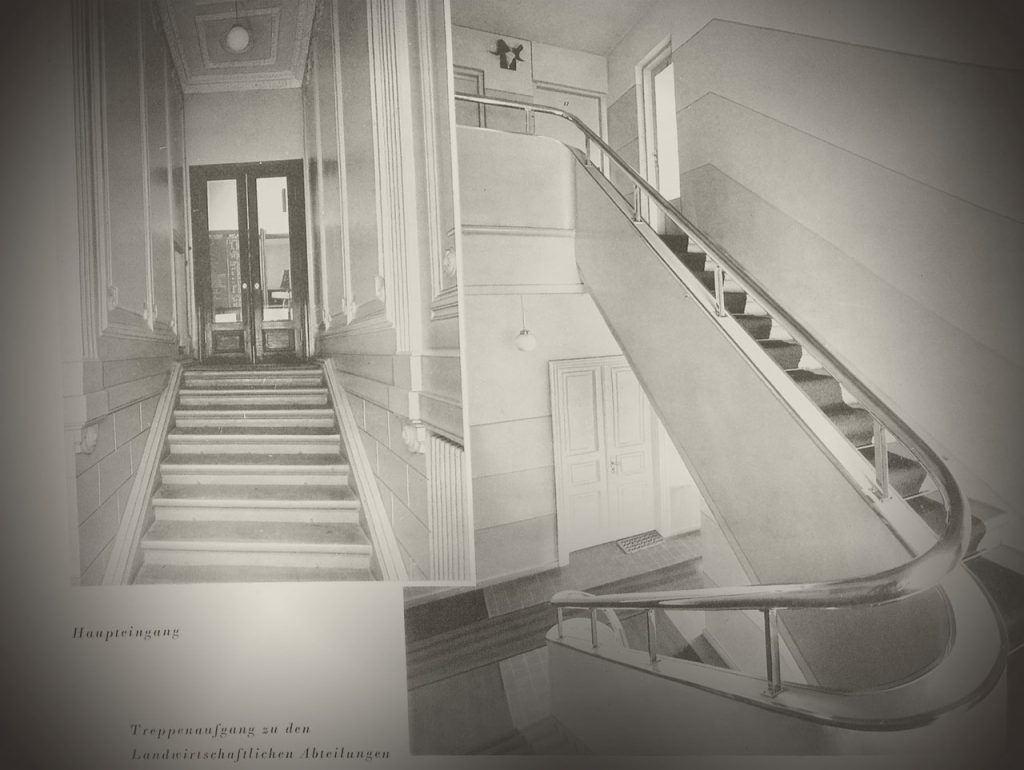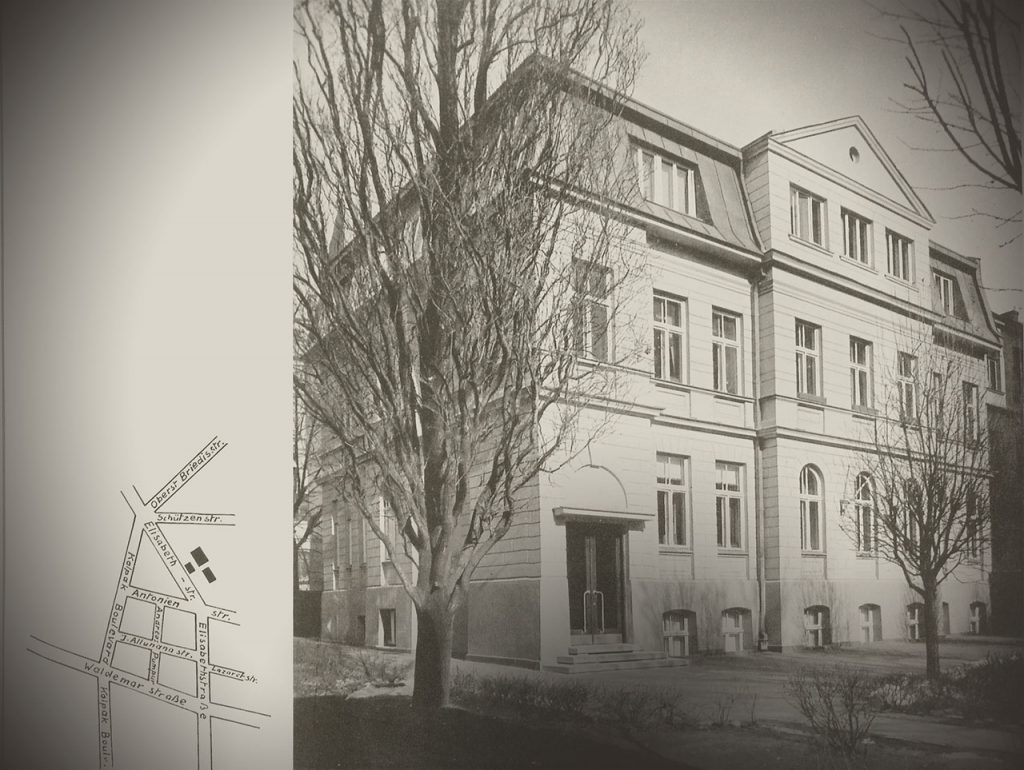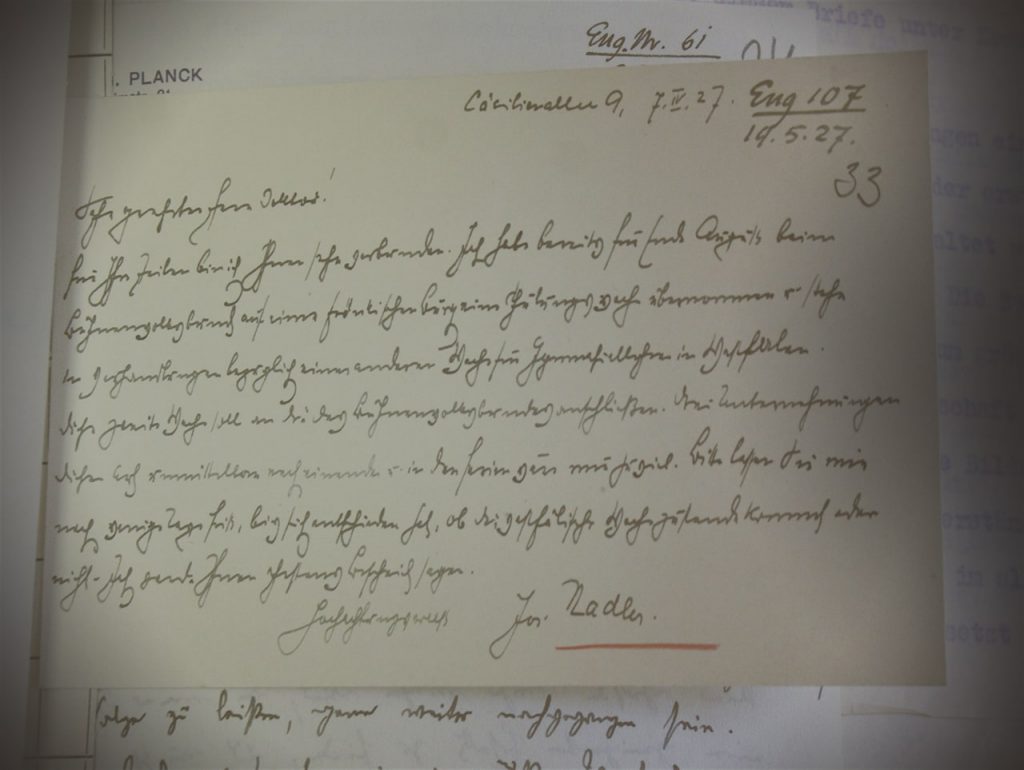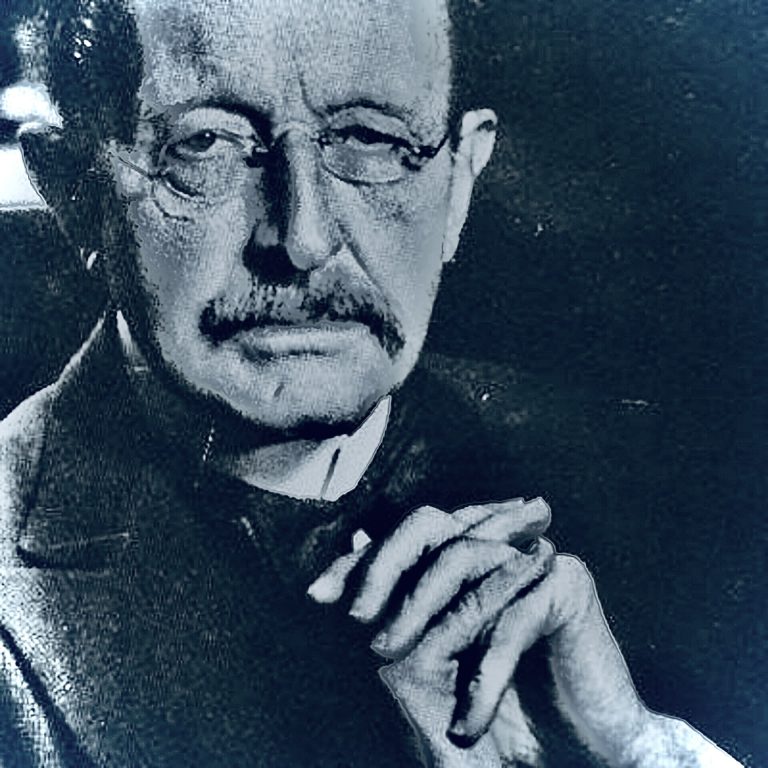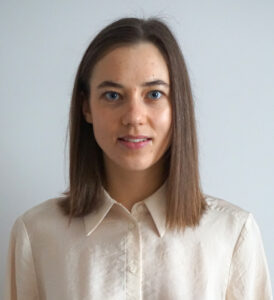A special part of documents in the HI archive is correspondence between officials, lecturers and eminent, widely recognized European and world-class scientists of that time. This correspondence is essentially about the scientists who were taking part in HI holiday courses. These courses were intended to improve HI’s image in the eyes of the youth studying in Latvia and of the circles that had academic interests. These courses turned out to be one of the most spectacular pages in the history of HI. For example, historian, medieval history coryphaeus Percy Ernst Schramm (1894-1970), who’s works, as “Herrschaftszeichen und Staatssymbolik”, were significant impulse in the science of history (HI rector’s Wilhelm Klumberg’s letter to Schramm in the 9th of August, 1937, LVVA, 4772/1/35, 344). Natural scientists were invited – chemist, Nobel Prize laureate (for research in physical chemistry) Walther Nernst (1864-1941), physicist, Nobel Prize laureate (quantum physics) Max Planck (1858-1947), and geologist, meteorologist Alfred Wegener (1880-1930) – Greenland traveller and the founder of the continental drift theory (see Wegener’s letter to Wilhelm Klumberg LVVA, 4772/1/186s, 59), as well as historian, the teacher of many eminent historians (H. Rothfels, G. Ritter and others) Hermann Onken (1869-1945) and others. Although several of the invited did not come to Riga due to different circumstances, they acknowledged that it was necessary to maintain personal contact with HI. The correspondence is a testimony to that.
Within the HeInRi project, particular attention will be paid to HI’s correspondence with the scientific elite of that time. Preserved letters from M. Planck, W. Nernst, and others is a testimony from that period as well as HI’s correspondence with different scientific institutions and foundations that supported the purchase of the tools for research (for example, Carl Zeiss Foundation, LVVA, 4772/1/31, 635). This correspondence represents not only the scientific contacts but also the cultural-political climate and the ideological prerogatives at the HI. Besides, correspondence with Max Planck (Planck’s letter to Wilhelm Klumberg LVVA, 4774/1/186s, 34) is yet unpublished testimony about Planck’s scientific activities at the end of the 1920s.
